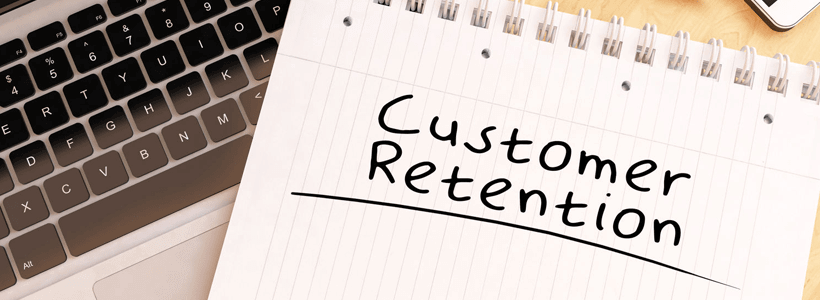If you’re in the contact center space, chances are you
already have a customer experience strategy. However, while many contact centers are able to pick out
various aspects of the customer experience, which could be improved, turning
these thoughts into a successful process which guarantees results is often
trickier.
67% of consumers cite inconsistent experiences as a reason for churn, so when it comes to developing a strategy, contact center managers need to be looking at the customer experience as a whole – rather than improving certain parts in siloes.
In this blog post, we’ll be doing a deep dive into how you
can create a holistic, end-to-end customer experience strategy that’s seamless,
frictionless, and sure to take your contact center to the next level.
Customer experience (CX) is centered on the needs and perceptions of the customer, not the business. This includes understanding customer needs at every stage of the CX life cycle, interactions with your business, and the difficulties they encounter.
But despite enthusiasm and investments in CX initiatives
over the past few years, only
one in four programs end up being successful and produce tangible results.
Due mostly to flaws in strategy and execution, great customer experiences are
still out of reach for most organizations.
In order to develop a successful customer experience
strategy, you first have to have a vision, understand and relate to your
customers, get real-time feedback while also managing employee responses, and create
a strategy that looks at the customer experience as a whole, rather than the
experience of a few select touchpoints.
1. Customer-Focused Culture
The first step is to create a
culture that is focused on customer experience. All the employees have to
chip in, and the perspective of the customer has to be factored into the
company vision and instilled into your company’s employees if you stand a
chance of succeeding in your CX efforts.
But how do you become a customer-first company?
One of the ways to do this is to create a list of statements
that will serve as guiding principles and help focus your goals and targets. These
guiding principles will drive the organization’s behavior when they are
embedded into every employee, ensuring that decisions made are
customer-friendly and that no action takes place without a deep consideration
of how it will affect your customers.
Another way to do this is by putting programs in place to
listen to the Voice of the Customer & sharing that data. Do all your employees
know what the results were from the last survey you sent out? Do they know the
key customer pain points you get calls on?
2. Know Who Your Customers Are
Second, know who your customers are and address their
specific needs to improve your customer experience.
Not all customers have the same needs and you can find many
different types of customers contacting your contact center – all with
different desires and expectations.
Knowing customer demographics like age, race, and residence
is not enough – think more widely to consider the ways they’ll be using your
products and services, their expectations of service from you, and the ways
they prefer to interact with you, for example.
With a deep understanding of who your customers are, employees should empathize with your customers and view the service from their point of view, enabling you to deliver better experiences across the board.
One way you can do this is by creating customer personas
with a name and personality attached and getting your staff to contribute to
this. For example, “Fridah is 29 years old and likes following a video
tutorial” or “James, 44 prefers reading manual instructions on the website”.
You should find that simply by humanizing your customers
through overt profiles and challenging your staff to think more deeply about
their needs, your staff starts to think less about your products and services
in isolation and start to think more about how they fit your customer base.
3. Service on their terms
SMS,
social,
and live
chat. What do all these channels have in common? They’re all channels that
your customers are familiar with and can access anytime and anywhere they want.
Moreover, unlike the telephone, these channels provide on-demand service,
without the hold music.
These channels are crucial in improving customer
experiences as it offers a real-time channel to find solutions for customers
without having them leave your website – and are especially popular among
online retailers who don’t want to let customers slip away if they’re the least
bit interested.
Unique features of these channels, like live chat’s cobrowsing feature, are already proven to boost customer satisfaction by as much as six points Other robust features that these on demand channels have include audio/video chat services, integrated knowledge bases and Chatbot services.
In order for contact centers to truly take advantage of
these on-demand channels, they need to ensure that these technologies fully
integrated into their tech stack as part of a comprehensive omnichannel
strategy.
This way, these channels can also boost business operations
by collecting contextual information that tells the agent what pages have been
visited before and which products have already been viewed. This metadata can
be used to improve sales and marketing efforts, as well as improve technical
troubleshooting for support staff.
Benchmarking and Continuous Improvement
When customers call your company, they expect a certain quality of service. To win them over, you need to deliver above average. Customers have a higher likelihood to pay more money if the customer service they receive is exemplary. A recent report from ICMI confirmed that 69% of customers will do that.
Exceptional service doesn’t happen by accident – you have to
understand what your customers are saying & take necessary steps to improve
their experience with your product or service. Not only is data important in
the formulation of a customer experience strategy, data is the key to
understand what your customers are going through.
To come up with the best strategy means trying out different
things and being able to collect data is just not enough anymore. Using that
data to get actionable insights & then testing a few different strategies will
ensure you know what works and what doesn’t.
One way to measure the effectiveness of a strategy if you
haven’t come up with your own yardstick to measure success is to go with the
NPS ask: “Would you recommend this service to a friend or relative?” You can
use a 5-point or 10-point scale to rate how happy or unhappy they were with the
service.
Here is another
example of this:
Another way to measure effectiveness without sending our surveys is by using AI to understand sentiments on each call & predicting customer churn based on their experience. By doing so, you will be able to understand customer pain points, how your agents are doing and what can lead to a good customer experience.
The data that provides actionable insights can also look at
what top performing agents are doing and use that as a training standard for
less performing or new employees. This will create a domino effect for constant
improvement on the agent side. Not only will the interactions with customers
will always be consistent but even improving from call to call.
Conclusion
There are no shortcuts to a great customer experience. After all, there is also no solid, universal definition of what makes for a great experience. No two customers want exactly the same thing from a company — and no two companies will deliver in identical manners.
Customer experience is the new battleground and prioritizing
it will give you an edge over your competition. But there needs to be a common
vision, shared and ingrained in all the employees.
This will take some time, but when the right values are
instilled into the company culture, it will be a huge payoff. Remember to
benchmark and analyze the methods you use to ensure you are getting business
results.






